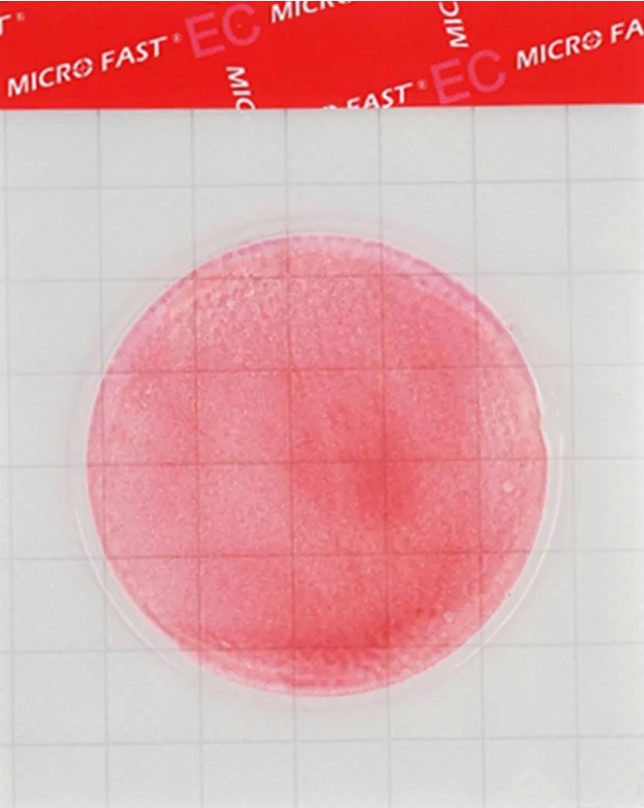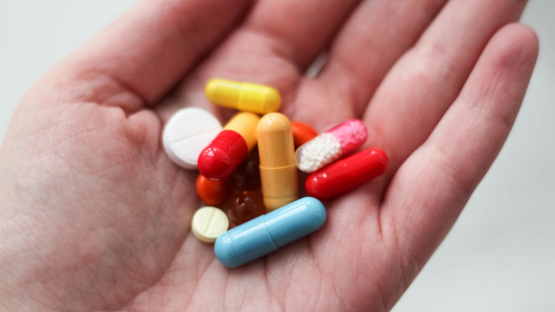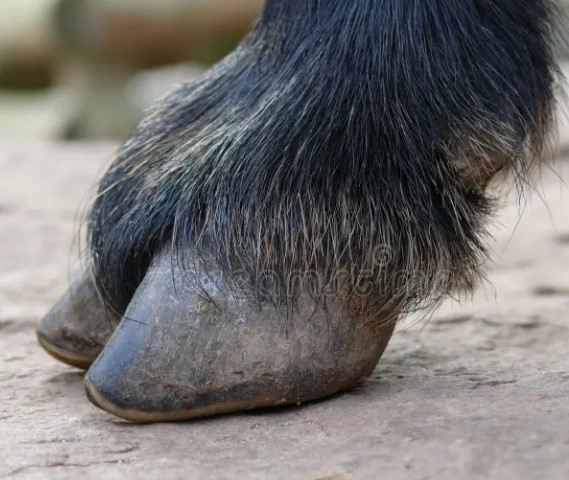Antibiotics are medicines aimed at destroying certain disease-causing bacteria in a living organism.

Antibiotics are medicines aimed at destroying certain disease-causing bacteria in a living organism. Antibiotics are used to treat humans, various animals and plants. The causative agent of a certain disease can attack both humans and animals, so sometimes the active ingredient of antibiotics is identical, the difference is in the dosage. The dosage most often consists of a calculation on live weight, respectively, an animal with a live weight of more than 200 kg will be several times higher than a person with an average weight of 75 kg. Antibiotics began to be produced by the pharmaceutical industry in the 40s of the last century. Since then, the ability of pathogenic bacteria to survive in the presence of antibiotics has been discovered, in science this ability is called resistance. The resistance of bacteria to survive in the presence of an antibiotic has spurred scientists to develop ever more effective next-generation antibiotics. However,
The search for new substances that could become an alternative to antibiotics has not yet been found. In this regard, humanity is on the brink of an abyss - without the ability to survive from pathogenic bacteria. One of the only ways not to push antibiotics to the limit is to carry out all types of therapies according to the strict prescription of a DOCTOR, to limit the intake of antibiotics with food, to limit their entry into the environment. While direct consumption of antibiotics can be controlled by prescription sales, other aspects become more and more difficult to deal with. it is known that in the treatment of mammals, traces of antibiotics are regularly found in the MILK and MEAT of animals. Therefore, it is necessary to strictly control the level of traces of antibiotics until they are completely eliminated from the body. Depending on the type of antibiotics and the duration of treatment, barriers to the use of milk and meat from such animals were identified. If the elimination period of antibiotics from the body is not observed, the person receives trace amounts of the antibiotic, which is sufficient to cause resistance.
In Kazakhstan, antibiotics for animals, and for humans as well, can be bought without a doctor's prescription and are in the public domain - just buy them. The use of antibiotics has become so ubiquitous and out of control that many smart people prescribe themselves and their animals a course of antibiotics. So, for example, in rural areas there are cases when a couple of cows fall ill and no longer give milk, and all neighboring cows, as a preventive measure, receive an antibiotic injection, which allegedly would help not to get sick in such a herd. Meanwhile, the unauthorized use of antibiotics induces resistance in disease-causing bacteria and eventually becomes ineffective in cases of acute infections and clinical need. Therefore, over time, the action of antibiotics becomes ineffective and it becomes impossible to cure.
The danger of uncontrolled use of antibiotics in animal husbandry, albeit in the dairy or meat direction, lies primarily in the fact that all these drugs end up in animal products. Accordingly, consuming such products, we consume antibiotics in small quantities as well. This “background” consumption of antibiotics leads to the fact that we, in turn, also begin to develop resistance to antibiotics. Therefore, in moments of a banal cold, conventional medicines no longer help us. Even more dangerous is antibiotic resistance in children, especially the youngest. If some banal infection that could be cured with some basic antibiotics hits, such drugs no longer help children.
In milk and dairy products, the main 4 groups of antibiotics are monitored: chloramphenicol, tetracycline, streptomycin and penicillin groups. The presence of these antibiotics is completely prohibited in raw milk, as well as in finished products of the dairy industry. For this, numerous methods for reliable detection of antibiotics have been developed and proposed: this is an express test of the system for rapid detection, this is an ELISA test of the system (enzymatic immunoassay), this is a microbiological method - by antibiograms, and of course, the determination by chromatography is the most sensitive and reliable method.
When taken to milk processing enterprises from farmers, milk is systematically tested for the content of antibiotics. With the content of at least trace amounts of antibiotics in milk, such raw materials are not accepted by the enterprise. Because such raw materials are also difficult to process on an industrial scale, dairy products do not turn out as they should, there are changes in consistency, texture, and even sometimes the taste does not match the product.
According to the WHO (World HEALTH Organization) in 2014 every year in the world more and more people suffer from antibiotic resistance. This situation is also associated with the uncontrolled use of antibiotics in animal husbandry. Thus, according to the recommendations of the WHO, as well as the International Epizootic Bureau (OIE), the use of antibiotics for veterinary use should be under strict control and be prescribed only as directed by a veterinarian. The OIE has added to the World Veterinary Code a set of guidelines with recommendations for the establishment and harmonization of national programs for the surveillance and monitoring of antimicrobial resistance, control of the amount of antibiotics used in animal production, as well as recommendations for ensuring the appropriate and appropriate use of antibiotic substances. In addition to the well-known antibiotic preparations themselves, often in practice there is the use of fakes for well-known drugs, which include more outdated active substances or completely little-studied substances or simple starch. There are uses of drugs that have not undergone any registration, respectively, their secondary effects and consequences are unknown. If animals were treated with unknown drugs, then the presence of residues and metabolites of such drugs in animal products (milk, meat) becomes even more suspicious. The duration of their elimination from the body is not known, the secondary effects of the drug remain a mystery to everyone. There are uses of drugs that have not undergone any registration, respectively, their secondary effects and consequences are unknown. If animals were treated with unknown drugs, then the presence of residues and metabolites of such drugs in animal products (milk, meat) becomes even more suspicious. The duration of their elimination from the body is not known, the secondary effects of the drug remain a mystery to everyone. There are uses of drugs that have not undergone any registration, respectively, their secondary effects and consequences are unknown. If animals were treated with unknown drugs, then the presence of residues and metabolites of such drugs in animal products (milk, meat) becomes even more suspicious. The duration of their elimination from the body is not known, the secondary effects of the drug remain a mystery to everyone.
Therefore, in all situations where the animal shows painful symptoms, it is necessary to consult a veterinarian, and blind injections cannot be given. It often happens in the off-season that cows have abundant nasal discharge, the udder becomes sensitive, and milk production decreases. Farmers themselves give injections with antibiotics based on symptoms, but at the same time they continue to donate or sell milk, and sometimes even continue to consume it themselves. Antibiotic therapy consists in a course of treatment, and not single injections, in addition, it is necessary to follow the instructions for the drug, which indicates the period during which the drug is excreted with milk. Only after this period has been observed, milk is again suitable for consumption. Many of these truths have been known since the 50s, but in the past, when this was strictly monitored, everyone followed the instructions, and for the last decades in the countryside, for some reason, people have decided that all these instructions are canceled and there is no longer any need to comply. However, the public health situation is becoming more and more threatening.
In addition to the visible symptoms of the disease in the animal, the opinion has spread in the villages that certain antibiotic preparations can stimulate milk and / or meat productivity. Because of this terrible misconception, some farmers give injections to obviously healthy animals, thereby artificially contaminating their products. From a professional point of view, such actions could be classified as sabotage against the people who consume the products of such a “would-be farmer”. The same category includes farmers who give antibiotic shots to their dairy animals, just because there are others in the herd who already have a manifestation of the disease. Such "preventive" measures are not justified and require professional intervention - if this practice justifies such preventive measures,
Read together with it:
- He crawled to the icon with prayer. The true story of a man who overcame drug addiction.Alexander Ovchinnikov. Topic News. Our project's hero was a drug addict for many years. The thought that this was a dead end never left him, but his addiction proved stronger. One day, when he could no longer walk, he crawled to an icon in prayer. This became his first step toward a new life. Today, he heads a charity center that helps those who have given up hope and are unable to quit ALCOHOL an...
- Колумбия: При экспорте скота сертификация и прослеживаемость больше не являются необязательнымиВысококачественное животноводство, особенно при экспорте, требует сертификации и прослеживаемости. Это необходимые условия для выхода и конкуренции на многих международных рынках, а также на некоторых всё более требовательных внутренних рынках. Колумбийское животноводство не является исключением из этих правил, и, хотя предстоит ещё многое сделать, всё большее число ферм и компаний внедряют эти ме...
- Rosselkhoznadzor has banned meat imports from two Belarusian enterprises due to violations.In addition, three other Belarusian producers are now subject to strict laboratory monitoring due to initial deviations: azithromycin was found in poultry MEAT from Druzhba Poultry Farm, and the pesticide imidacloprid was found in honey from Pchalyar Polachchyny Farm. Powdered MILK from Luninetsky Dairy Plant was also found to containcoli bacteria . These measures were taken at the request of the ...




























































